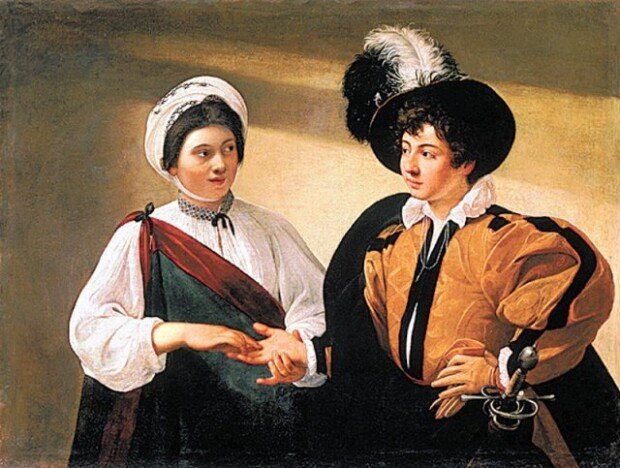The temptations of youth
The temptations of youth
Posted June. 23, 2022 07:44,
Updated June. 23, 2022 07:44

Every great artist was once an unknown prospect. Caravaggio, revered for having pioneered Baroque-style painting, was an assistant to other painters in his early 20s. This painting, in which a gypsy girl is reading a young man’s palm, is one of the early drawings of Caravaggio. Why did the young artist choose the theme of the fortune teller for his paintings?
Caravaggio was trained as a painter in Milan since he was 13 years old, serving an apprenticeship. He came to Rome in 1592, when he was 21, allegedly fleeing from violence he had been involved in because of his temper. At first, Caravaggio was indigent, having no money and nowhere to stay. However, he soon managed to find a job thanks to his talent. Caravaggio began apprenticing with the painter Giuseppe Cesari, who was supported by Pope Clement VIII, drawing flowers and fruits. However, Caravaggio lost this job after getting into a fight with Cesari.
In those gloomy days, Caravaggio drew fortune tellers twice. A gypsy girl is gently stroking the hand of a well-dressed boy, falsely reading his palm while secretively removing his ring from his hand. The man has been charmed off by her beauty, sweet words, and gentle touch, completely oblivious to the ring slipping off his finger. An immature, inexperienced young man, showing off his wealth, is completely taken by a gypsy girl whom he met on the street. Caravaggio’s genre paintings that depict scenes from everyday life were something new to the Romans at the time. This painting, which captures a moral lesson in witty, playful style, was so sensational that it was copied numerous times.
“The Fortune Teller” gave wings to Caravaggio, who was an unknown artist. After Cardinal Monte bought the second version of this painting, Caravaggio earned his reputation and went on the fast track to the top. Caravaggio might have painted this work to remind himself of one message: when you are in hard times, beware of a stranger’s sweet seduction and excessive hospitality.







